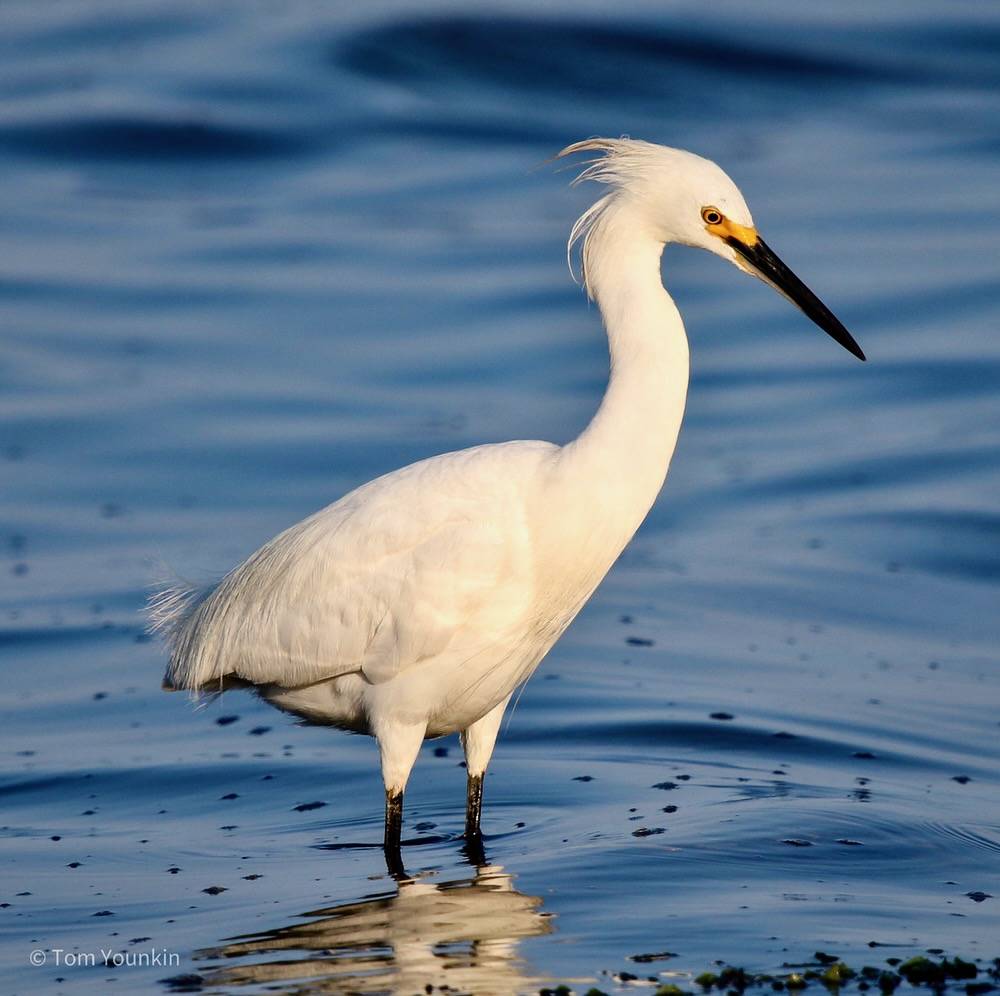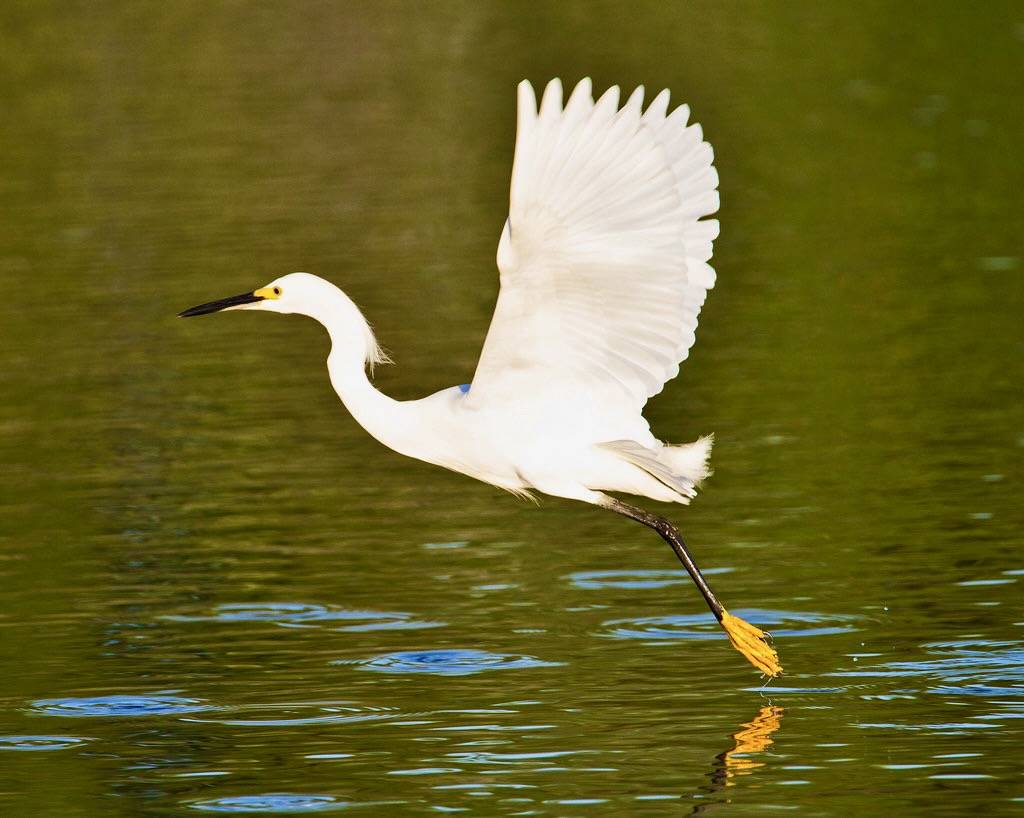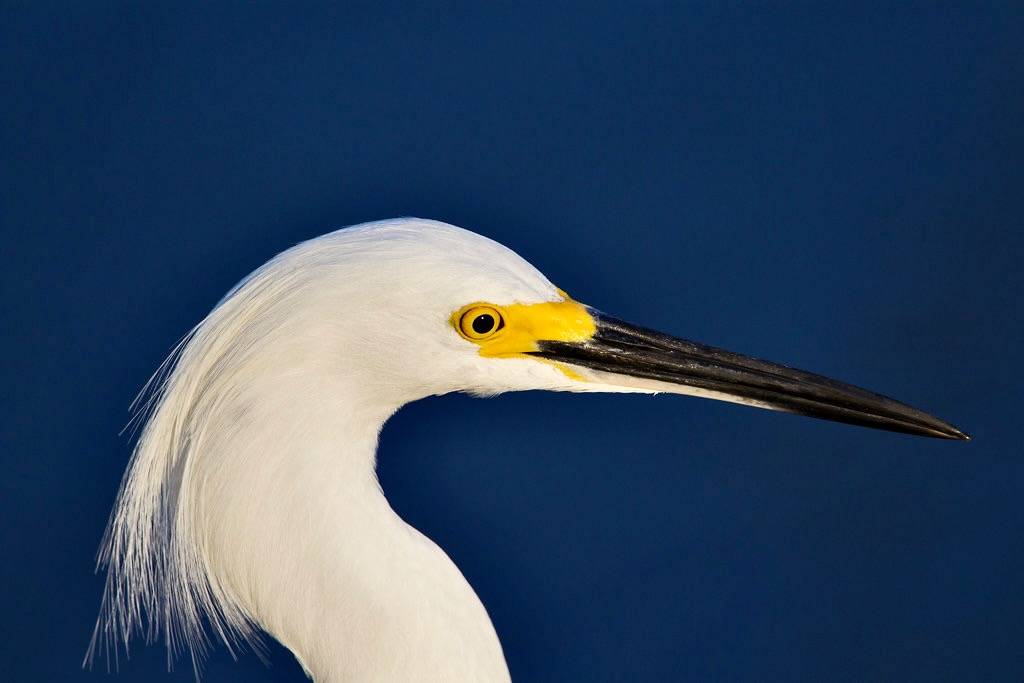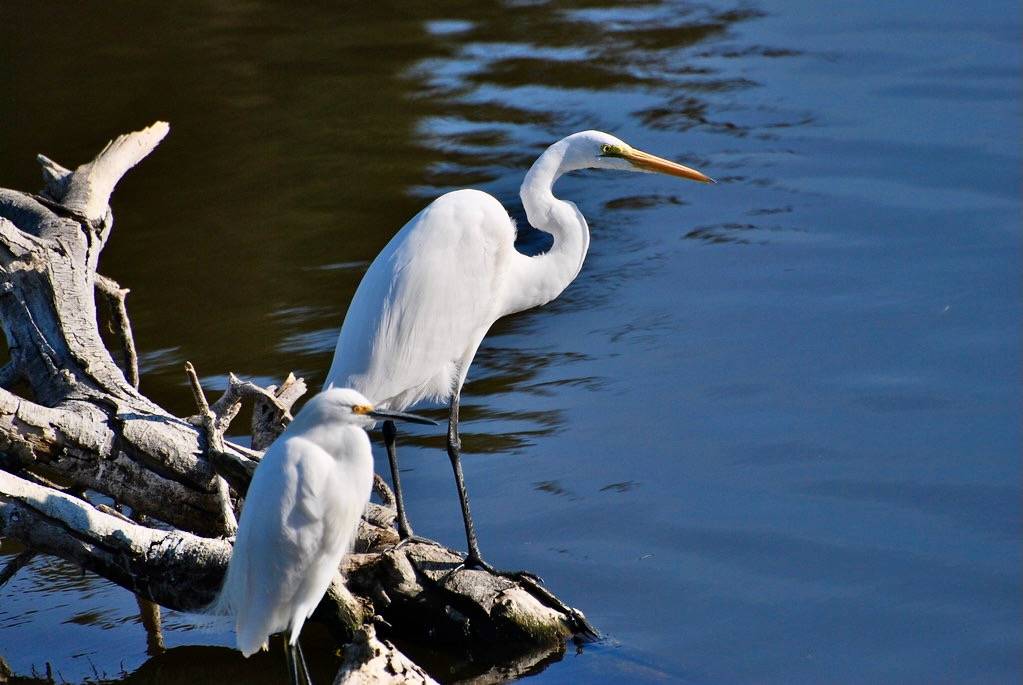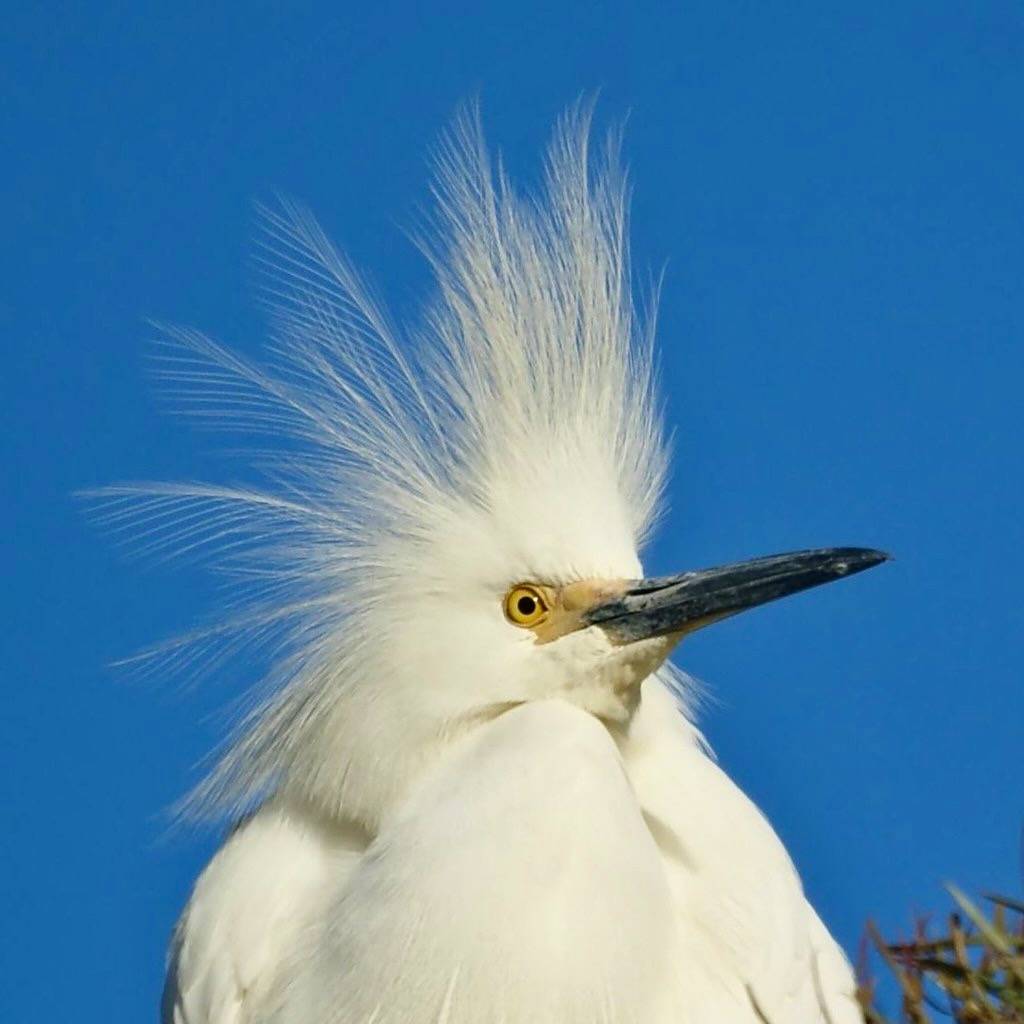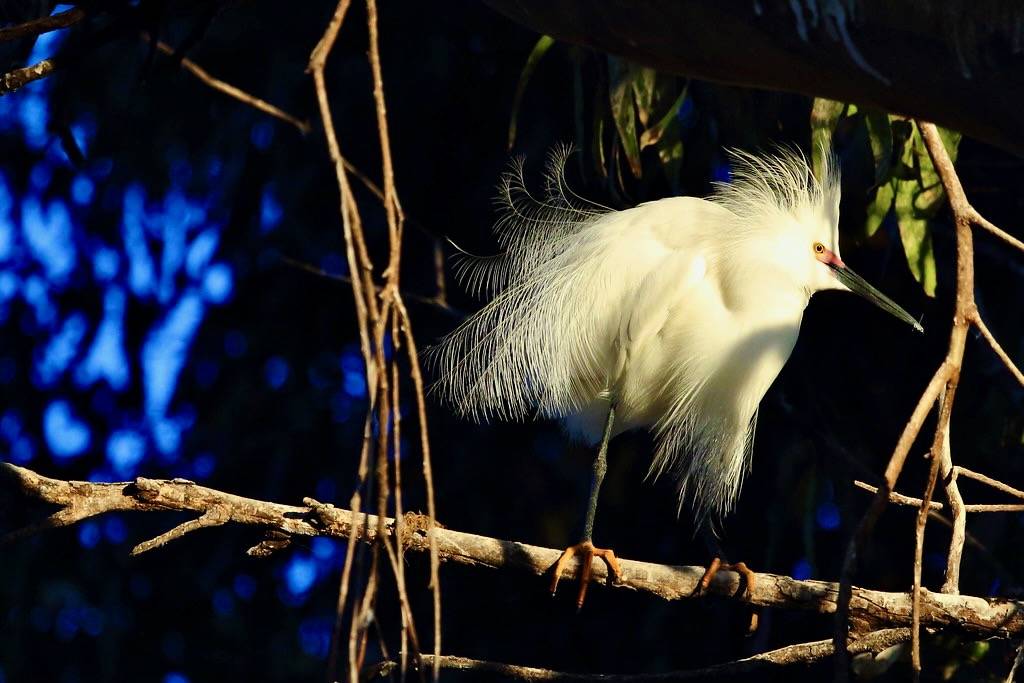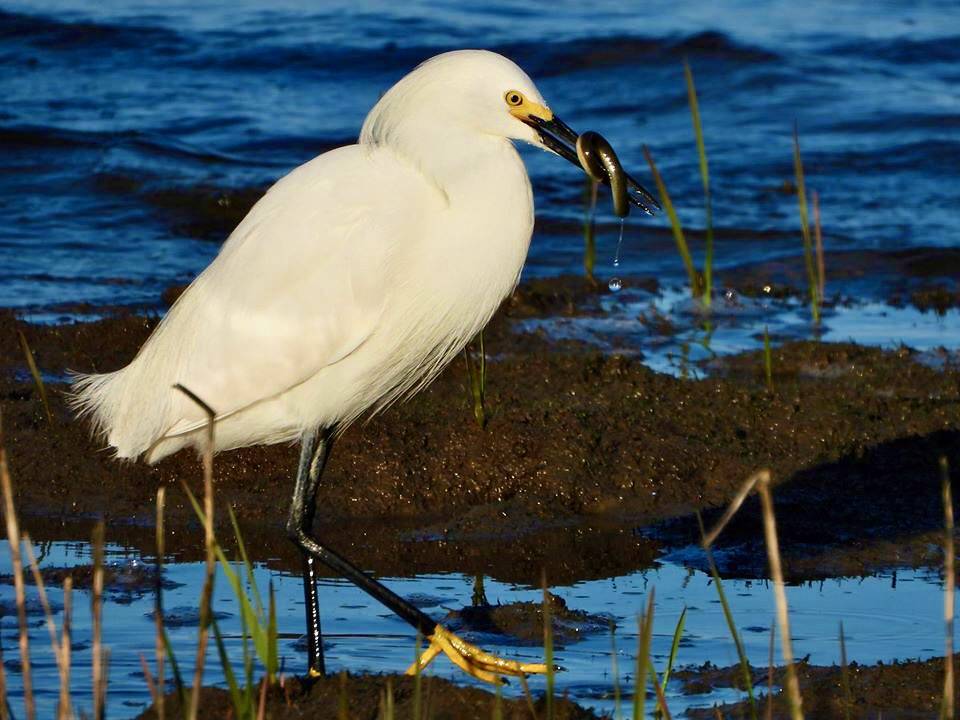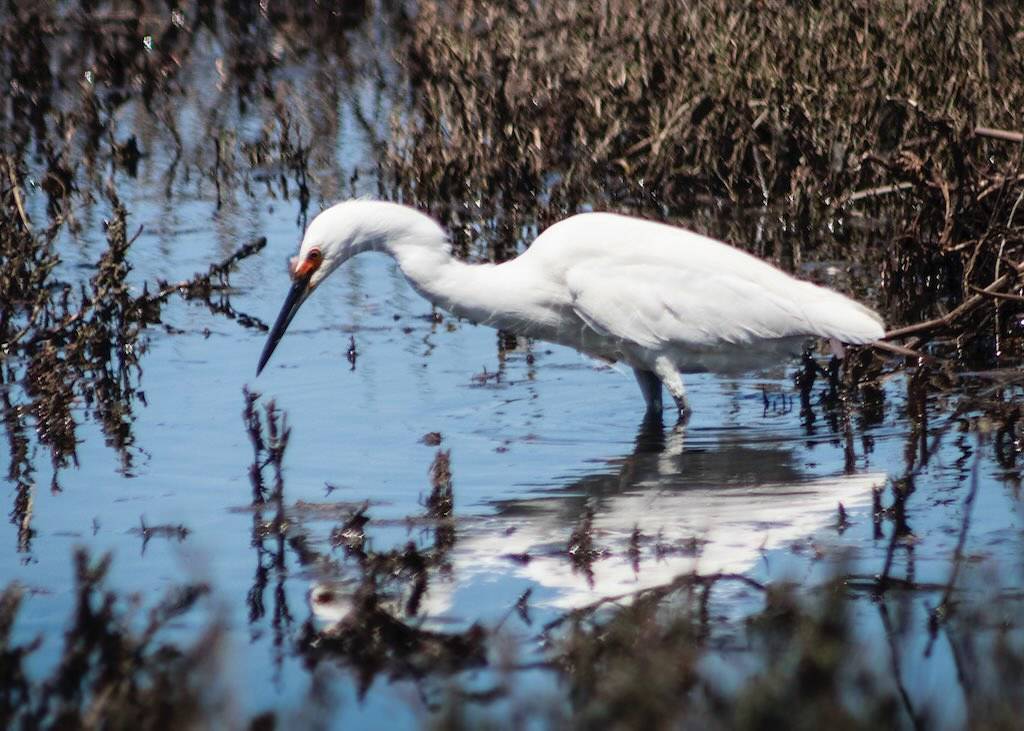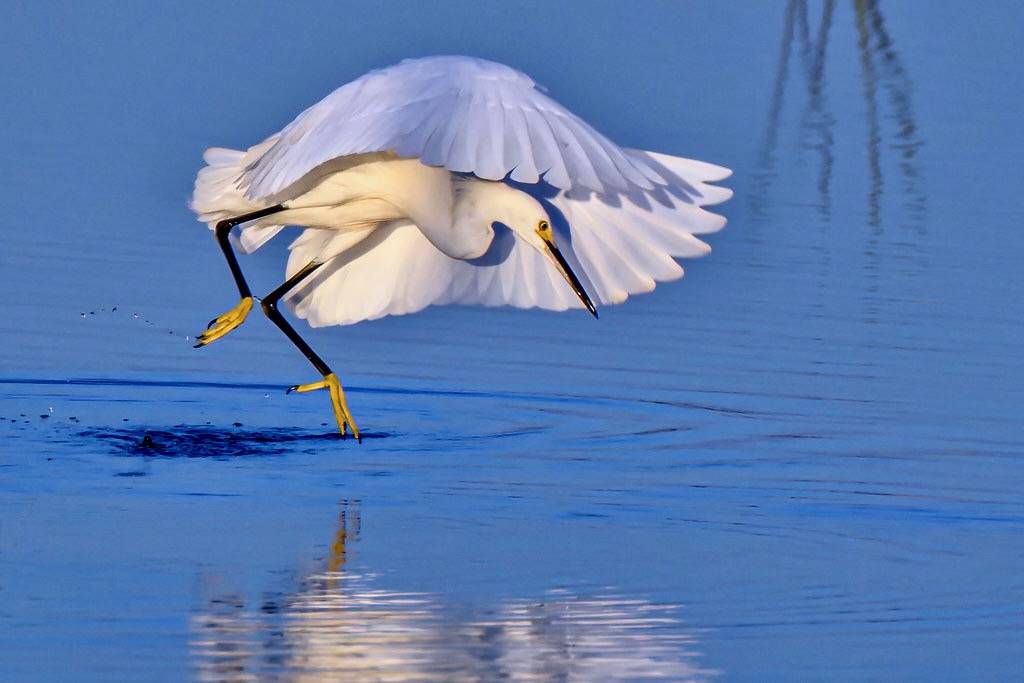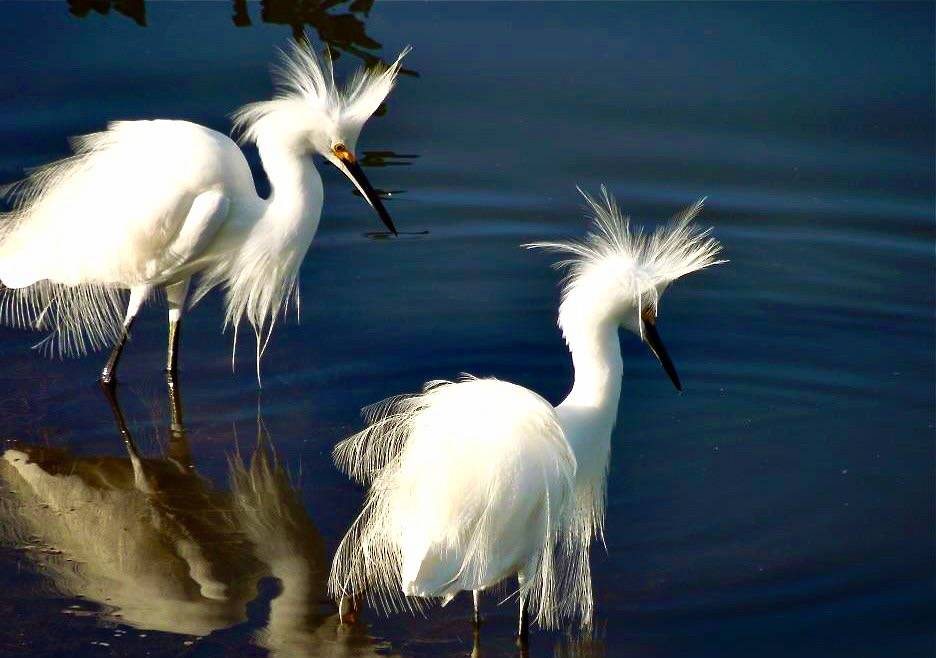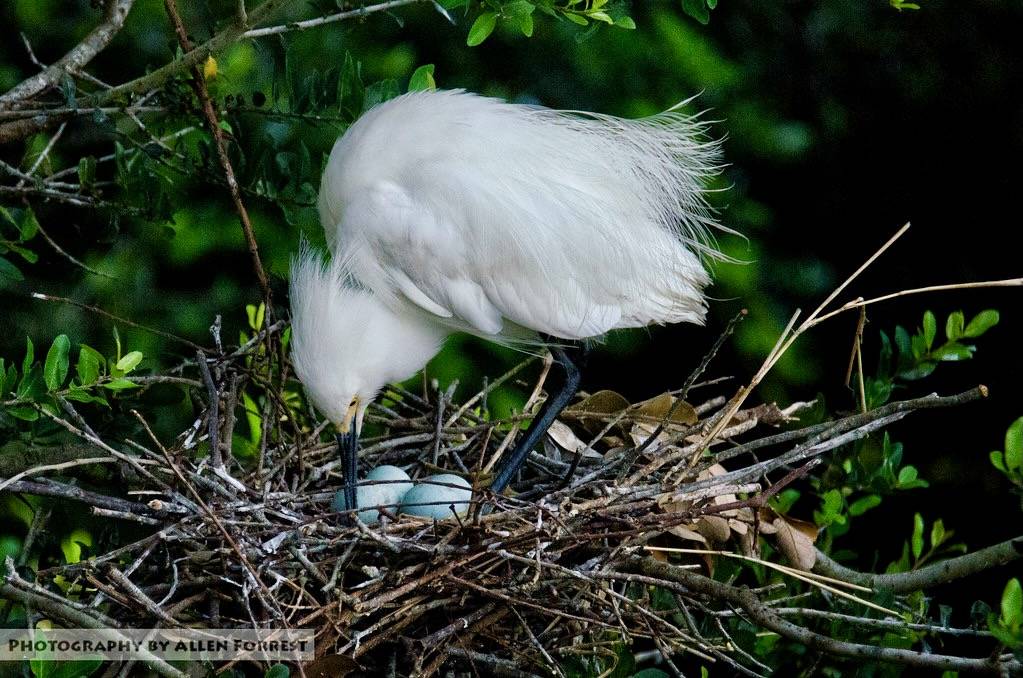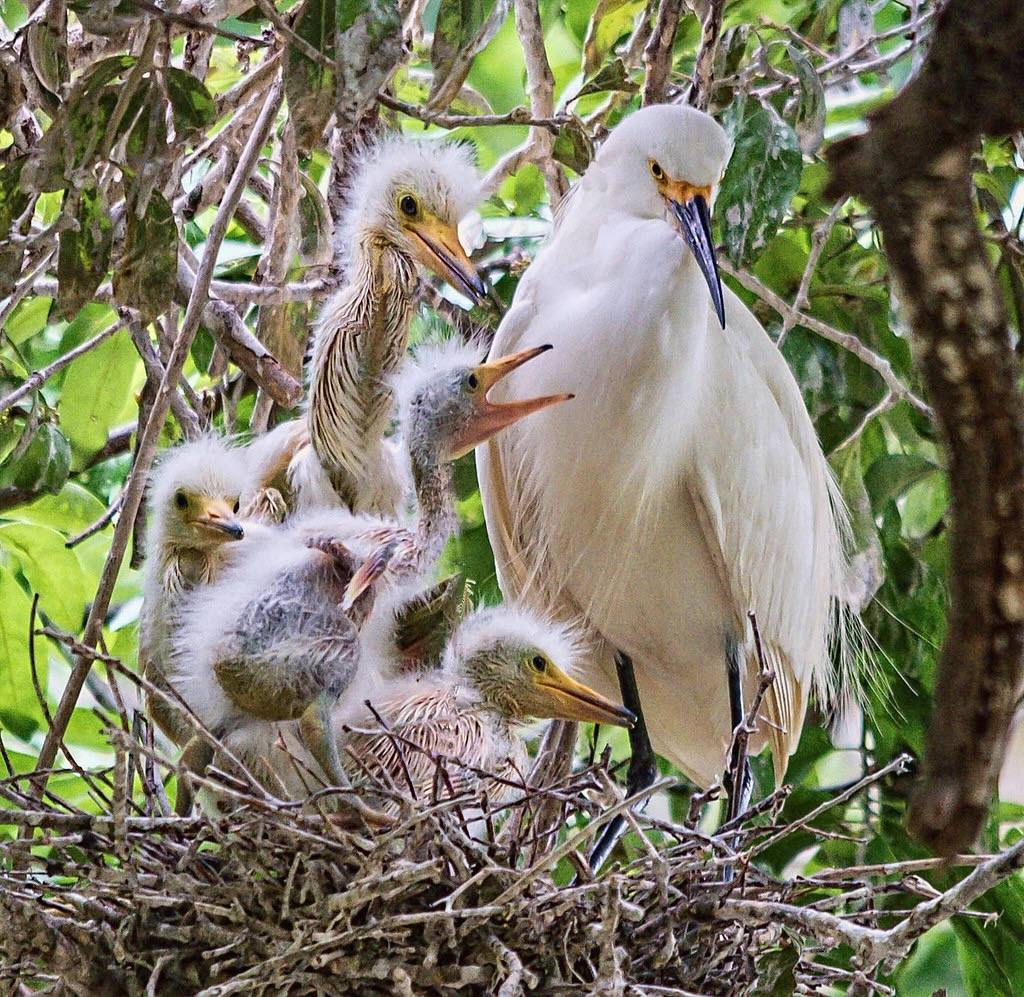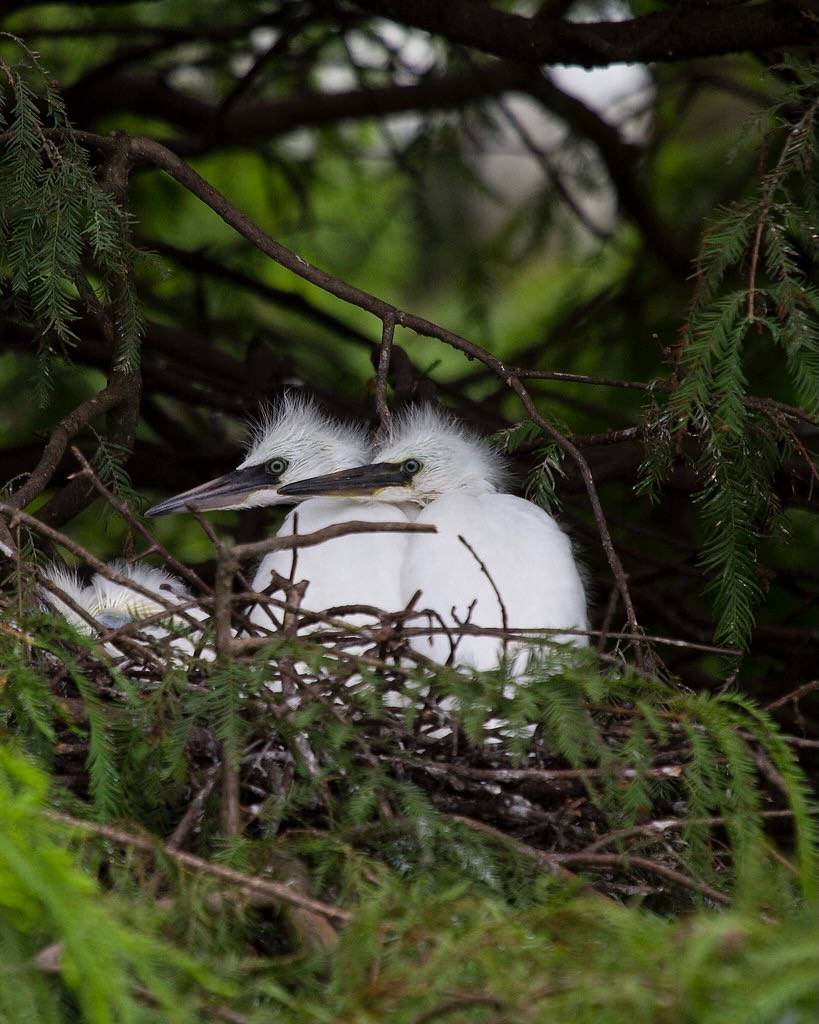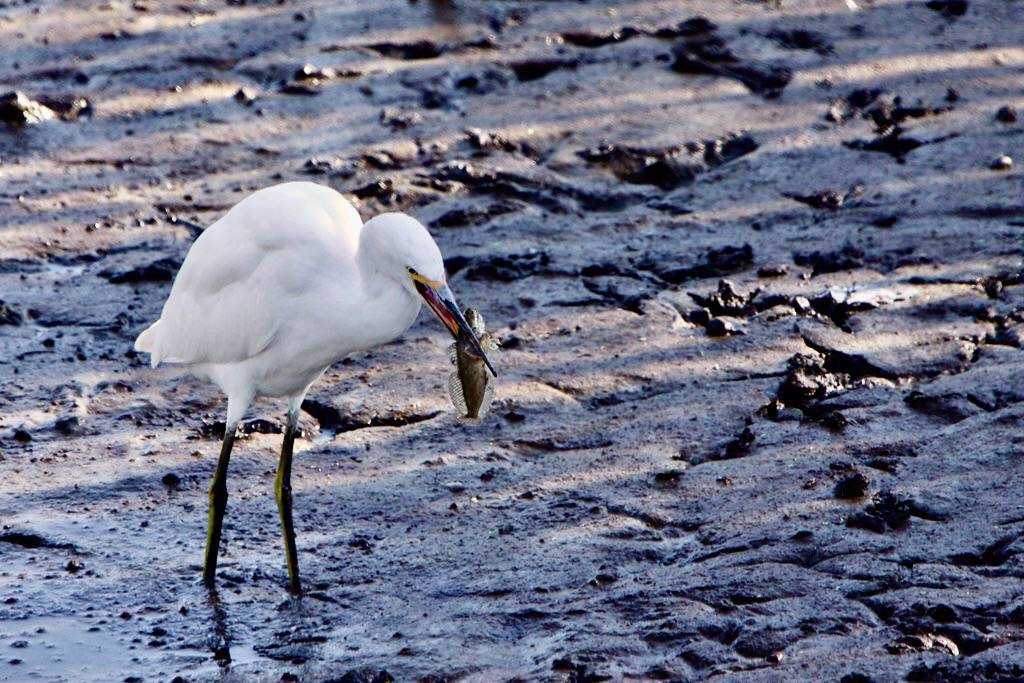Snowy Egret
Snowy Egrets visit Salter Grove occasionally from April to September, probably on furlough from nesting colonies on islands in Narragansett Bay (Dyer Island, Gould Island, Prudence Island, and Rose Island). It can be seen wading in brackish shallow water along the vegetated shorelines of the Causeway, Marsh Trail, or Rock Island.
A solitary white egret in the park can be either a Snowy Egret or the Great Egret. It is a Snowy Egret if it is only about two feet tall, compared to the Great Egret which is about four feet tall. The Snowy Egret has a neck that is not much longer than its body, a black bill, black legs (but dullish green in immatures) and bright yellow feet. In contrast, the Great Egret has a neck that appears overly long, a yellow bill and black legs with black feet.
The Snowy Egret does not only sit and wait for fish like the Great Egret and Great Blue Heron. It uses its feet and other parts of its body to flush out prey before stabbing food items like crustaceans, fish, frogs, insects, and worms with its spear-like bill. Unlike the other egrets and herons which primarily feed while standing still, it will also feed while it is walking, running, or hopping. It will also hover with its feet just above the water to dip-fish.
The Snowy Egret occurs in many types of wetland from southern Canada, through Central America, and south to Chile and Argentina. It is a colonial breeder, nesting in thick vegetation, often in the company of other herons and egrets. More northerly populations migrate to the gulf Coast and Florida for the winter while southerly populations are resident year-round.
It is hard to believe now but in 1886 the long wispy feathers that the Snowy Egret develops during breeding season were used to decorate women's hats and were valued at $32 ($1,169 in 2022 dollars) per ounce--more than the value of gold at the time! Its colonial nesting habit made it easy for hunters to harvest these feathers on a large scale to meet the demand of the fashion industry.
It was on the brink of extinction until legislation was put in place to stop the commercial slaughtering of birds for their feathers. Under protection of the 1918 Migratory Bird Treaty Act, populations of the Snowy Egret have recovered and its breeding range has expanded northward.

